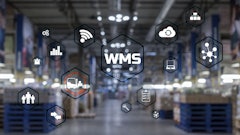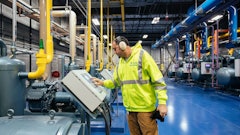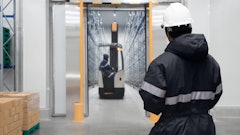
For the past few years, stores have watched as shoppers shifted their preferences from in-person to online and back again. The future points to a hybrid model, one that combines in-store and online purchase and delivery. Keeping up with customers’ shifting expectations can feel like chasing a moving target for retailers and grocers alike, but by nailing one aspect of the overall experience — fulfillment — businesses can delight customers, cut operational and delivery costs, and keep their operations flexible enough to meet any future changes.
The bar for creating an excellent fulfillment experience is high. A 2023 report showed that 62% of consumers won't purchase from a retailer without the promise of free shipping at checkout, while another found that 85% of consumers will not shop with a retailer again after a poor delivery experience. Perhaps it’s not surprising then, that many retailers are struggling to meet these expectations. Less than half (49%) of retail executives agreed that their organizations were meeting customer expectations for order fulfillment.
Traditional online fulfillment models rely on massive remote warehouses to process orders, which are then transported to a local center, from where orders are finally shipped the last mile to a customer’s doorstep. The strategic, operational and financial acumen needed to successfully pull that off while remaining profitable is a high bar to clear for most businesses. Surprisingly, the ideal fulfillment center might already be right under their noses, tucked away in the back of their stores. By leveraging existing space and automated storage and picking, stores can unlock a multitude of benefits.
Putting products closer to customers
In-person shopping frequently comes with its share of cluttered stores, long customer wait times, and inefficient workflows for the employees. Transforming the often inefficiently used square footage at the back of the store into a fulfillment center helps address those challenges. For retailers, having products in close proximity to the sales floor facilitates seamless inventory management and restocking, ensuring well-stocked shelves and optimal product availability.
It doesn’t take a lot of space to house an automated fulfillment solution. With robotic systems and vertical stacking, businesses can make the most of their available space, efficiently organizing and retrieving products for fulfillment purposes. A hyperlocal fulfillment center also drives down shipping costs and maximizes the store’s already hefty real estate investment without the need for expensive off-site warehouses.
Shipping from the store
By unlocking the ability to ship directly from a store location, retailers can offer more expedited shipping options. Same-day and next-day shipping become more financially viable and even provide an edge over those online retailers that rely on centralized warehouses located far away from the customer's location. By shipping from the store and tapping into their proximity advantage, businesses offer more efficient delivery services, enhancing customer satisfaction and driving repeat purchases.
Flexibility for multichannel shoppers
In its latest State of Retail & the Consumer report, the National Retail Foundation found that while consumers still enjoy the convenience of online shopping, growth is spurred by multichannel sales, where physical stores remain significant. Customers can browse and purchase products through various touchpoints, such as a website or mobile app, and have the option to pick up their orders in-store or via curbside pickup.
With a local fulfillment center at the back of the store, businesses can seamlessly integrate their online and offline channels, enhancing convenience for the customer but also encouraging cross-channel sales and fostering a deeper connection between the brand and its audience.
The key here is flexibility, both in the sense of how to fit an efficient storage solution into existing real estate and how to adjust fulfillment capacity that scales as your demand grows. Local fulfillment with high throughput and high-density automation, especially one that fits right into the existing back of a store, enables retailers to unlock business value and serves as an important first step to building a resilient supply chain to accommodate ever-changing customer needs and behaviors.

























